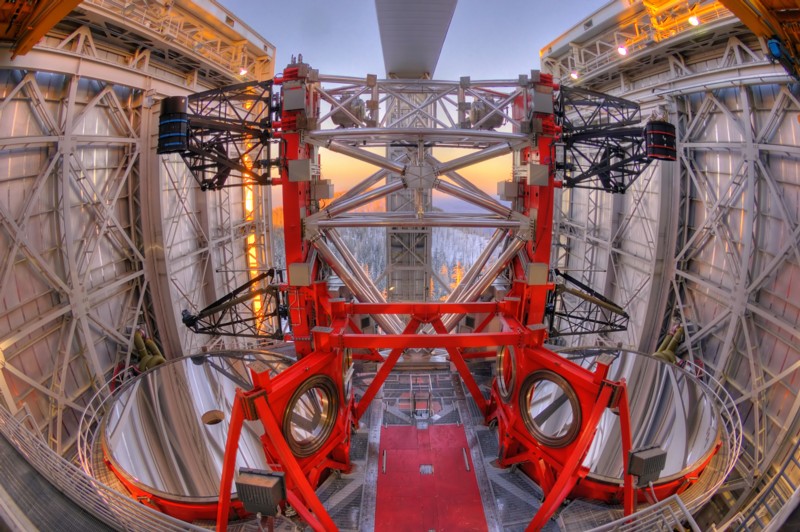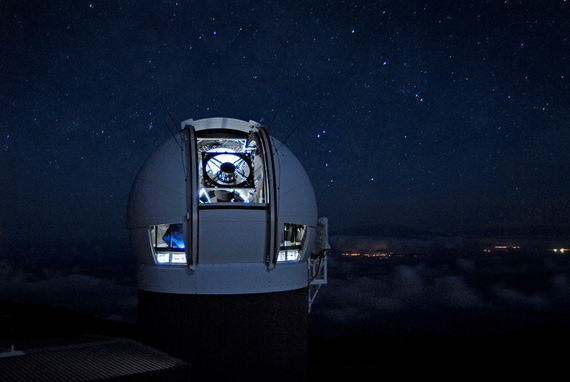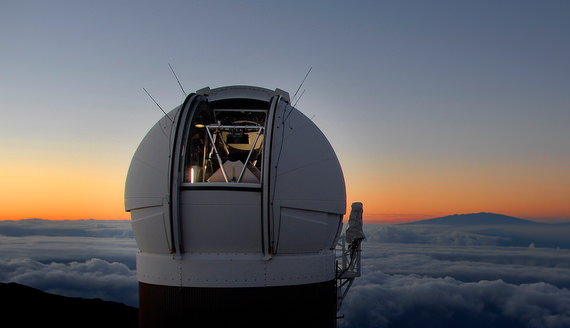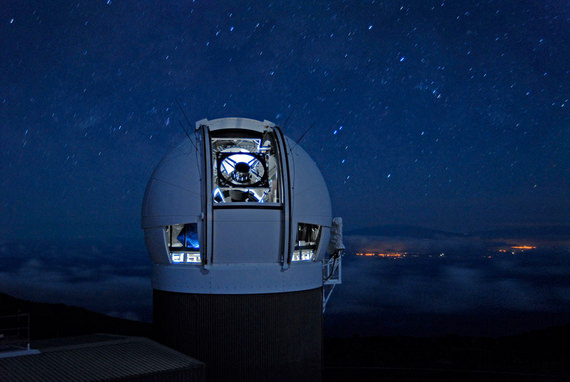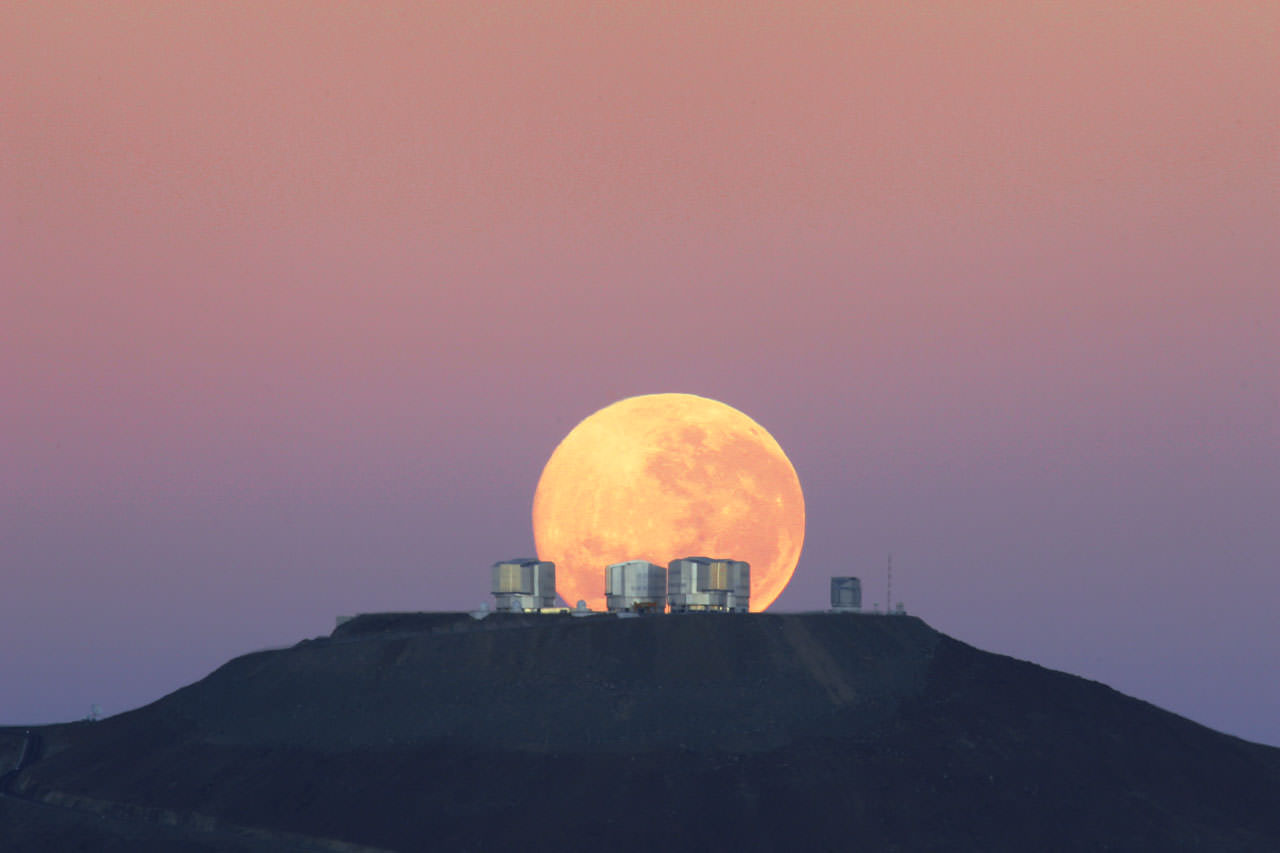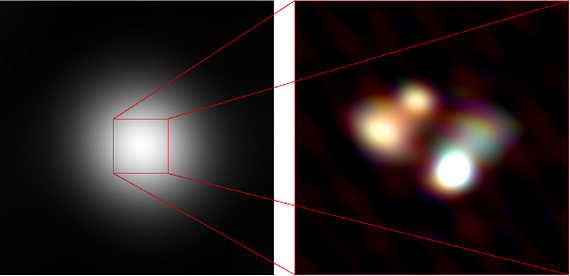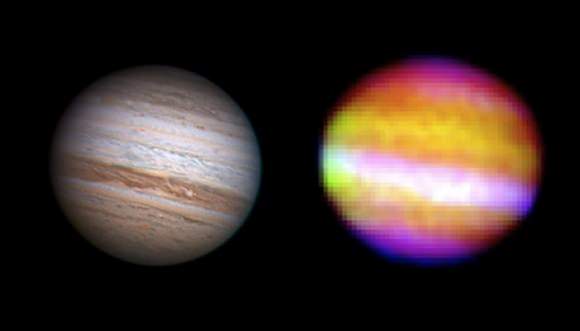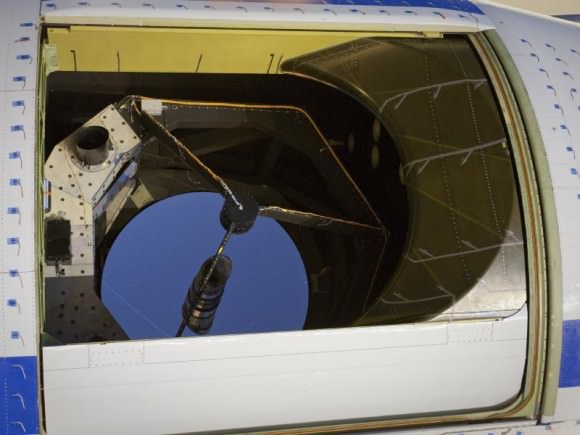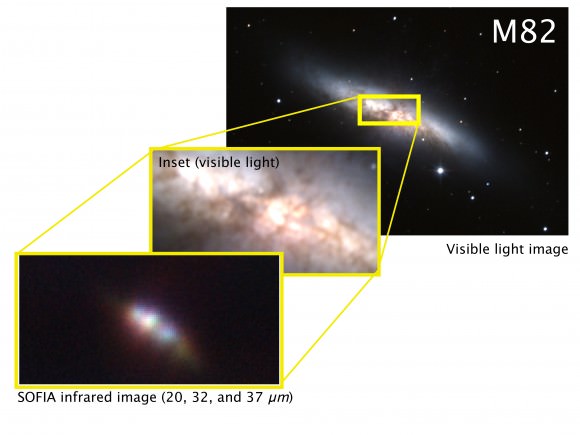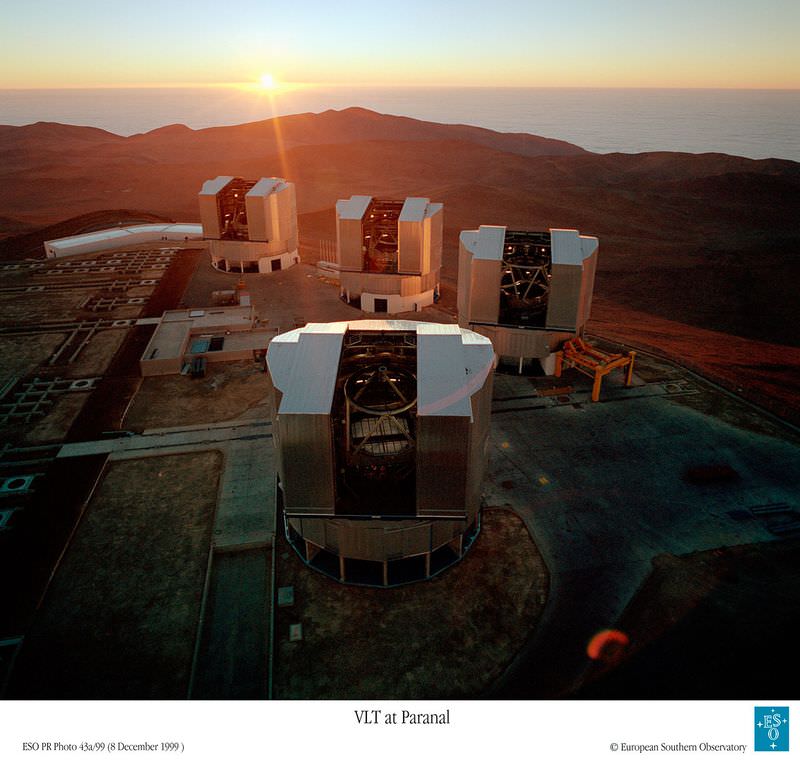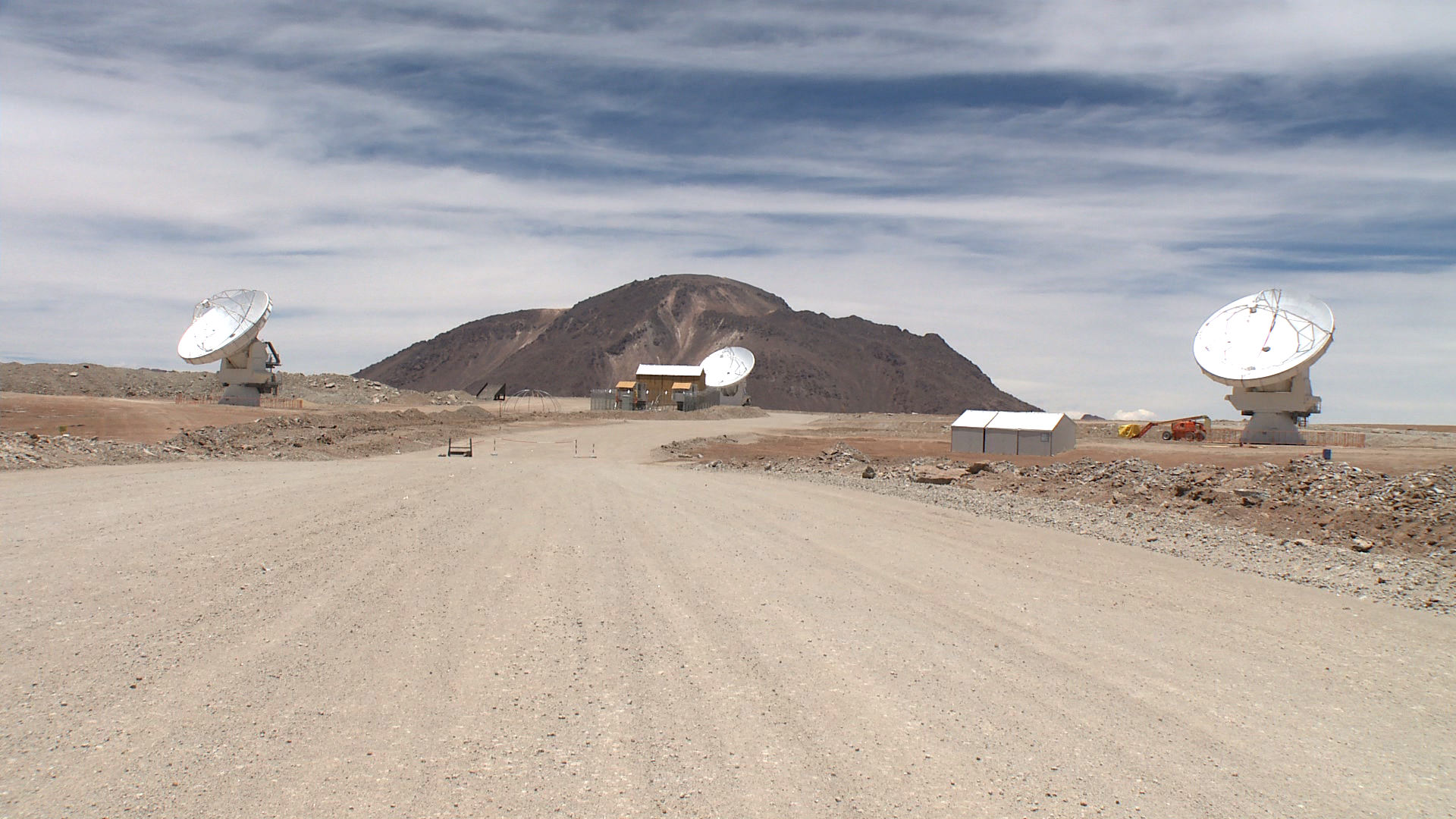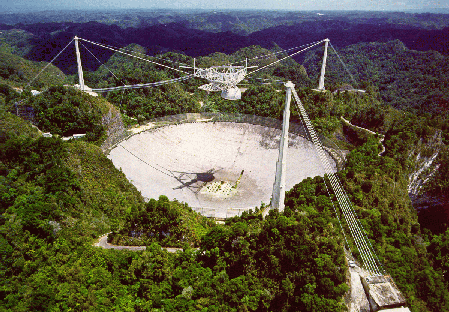[/caption]
We received several questions about our article on the new high-resolution LOFAR (LOw Frequency Array) image of quasar 3C196, concerning what was actually visible in this new image. We contacted LOFAR scientist Olaf Wucknitz from the Argelander-Institute for Astronomy at Bonn University in Germany, and he has provided an extensive explanation.
“3C196 is a quasar, the core of which is sitting right in the middle of the radio component,” Wucknitz said. “The core itself is not seen in radio observations but only on optical images. A possible reason for not seeing the core or the jets is that the central engine may not be very active at the moment (or rather it was not very active when the radiation left the object about 7 billion years ago). Alternatively it is possible that the inner parts of this source radiate very inefficiently so that we just do not see them in the radio images.”
In any case, he said, there must have been considerable activity earlier, because extensions of the jets that form radio lobes and hot spots are able to be seen in the image.
“The main lobes seem to be the bright SW component and the more compact NE component. When compared to observations at higher frequencies, these have the flattest spectra, i.e. they dominate at higher frequencies,” Wucknitz continued. “Then there is the other pair of components, the fuzzier E and W components. They are much weaker at higher frequencies.”
“The standard explanation for this would be that the jets from the core are changing its orientation with time (e.g. due to precession caused by a second black hole near the core, but this is very speculative). In this scenario the more extended components are older. Because of their age, the electrons causing the radiation have lost so much energy that we now see more low-frequency (i.e. low energy) radiation. The more compact components would be younger and therefore produce more high-frequency radiation.”
Interestingly, the W and E components show very different “colors” between 30-80 MHz, he said, so there must be some difference in the physical conditions in these two regions.
“Another possible explanation is that the compact components are the main lobes. There the jets interact with the surrounding medium. The matter is deflected and causes an outflow which we see as the other components.”
So basically, Wucknitz said, with the study of the data now available, they cannot draw firm conclusions, and he and his team have not had the opportunity to write a paper on the new image. “At the moment we are concentrating on getting LOFAR to run routinely and try to resist the temptation to do too much science with the first images. I hope that we can provide a real scientific analysis of this and similar images later this year.”
However, he suggested a couple of earlier papers that discuss quasar 3C196.
“Rotationally symmetric structure in two extragalactic radio sources” by Lonsdale, C. J.; Morison, I. describes the model of rotating jets for several obects including 3C196.
And this paper, Kiloparsec scale structure in the hotspots of 3C 196 by Lonsdale, C. J. discuses how previous observations by the MERLIN array revealed the presence of complex structure in each of the two bright hot spots in the quasar.
Wucknitz said he looks forward to delving into this object deeper as more of the LOFAR stations come online. “Once we can calibrate our new data better and produce slightly nicer images, we can hopefully say more and decide for one of the models,” he said.
Thanks to Olaf Wucknitz for providing an explanation of this new LOFAR image. Still have questions? Post them in the comments below.

